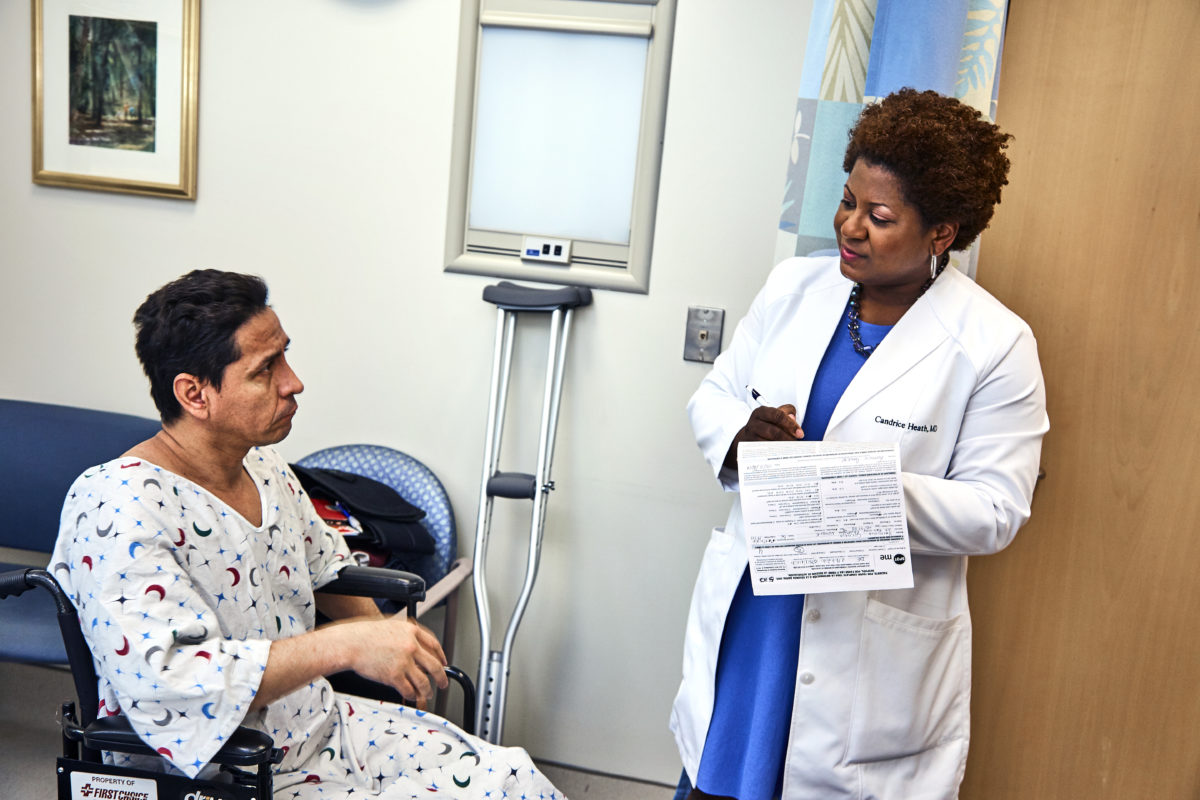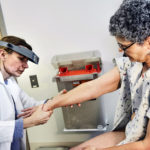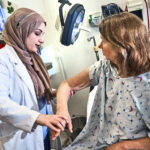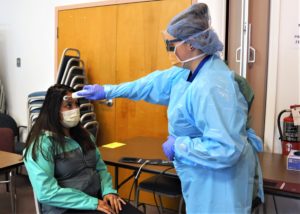Mary Hoffecker had a special reason for participating in Christiana Care’s annual free skin cancer screening on May 11. She lost her brother, three-time Olympian Frank Masley, to melanoma last September. He was 56.
Frank, an avid outdoorsman, would have wanted her to help educate people about the dangers of sun exposure, she said.
“He very much wanted to spread the word: ‘Put sunscreen on,’” Hoffecker said after being examined by physician assistant Naura Shah, who advised her to follow up with a dermatologist regarding a spot on her upper back.
Hoffecker was among 86 participants who were screened at the evening event, held at the Helen F. Graham Cancer Center & Research Institute. Of those, 26 were referred for follow-up visits. Another 15 were uninsured and will require additional assistance, including, in some cases, an interpreter, said Nora Katurakes, MSN, RN, OCN, manager of Community Health Outreach & Education.
For the past 27 years, the Graham Cancer Center has partnered with the Academy of Dermatology to offer an annual free skin cancer screening to encourage early diagnosis, when melanoma is highly curable. This year’s program included an education session, individual screenings and an informational booth by Moving for Melanoma of Delaware.
Skin cancer is the most common form of cancer in the United States. Two common types are basal cell and squamous cell cancer. Melanoma is less common but more dangerous.
Ultraviolet rays, including those used in tanning beds, are the most preventable risk factor for melanoma. In Delaware, this is borne out by the disease’s prevalence in Sussex County, home to the state’s beaches.
The first 20 years of your life are when much of the sun damage happens. People who spend a lot of time in the sun or have been sunburned; have light-colored skin, hair and eyes; or have a family member with skin cancer are more likely to get the disease. But it can affect anyone.
That’s one of the reasons Christiana Care dermatologist Candrice Heath, M.D., was pleased to see Altamese Burbage, who is African-American, enter her exam room.
“It’s definitely a myth that people with brown skin can’t get skin cancer,” Dr. Heath said as she examined Burbage.
Another dark-skinned participant, Tanisha Lewis, concurred. She attended the screening to have two marks on her calf looked at. She was pleased to learn they were benign. Some of her family members, who have darker skin, might not have noticed such marks, she said. But that doesn’t make them immune to the disease.
“They need to know we are all at risk,” she said.
State statistics indicate that 340 new cases of melanoma will be diagnosed this year, and 27 people will die of the disease.
In the case of skin cancer, an ounce of protection is worth a pound of cure. That’s the amount of sunscreen – enough to fill a shot glass or the palm of your hand – needed to cover all exposed areas of the body.
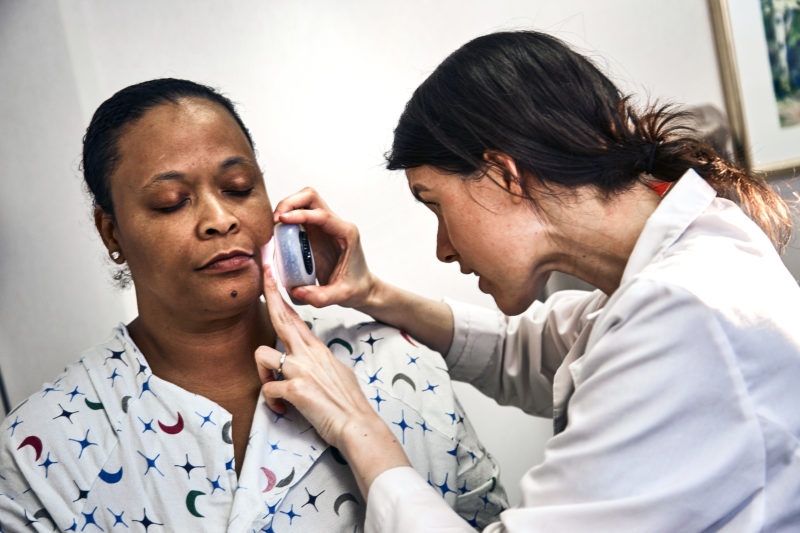
Tips to prevent skin cancer
- Limit exposure to the sun between 10 a.m. and 2 p.m., when its damaging rays are strongest. A memory tip: If your shadow is shorter than you are, head for shade.
- Mitigate your exposure risk by wearing protective clothing, like a long-sleeved shirt, wide-brimmed hat and sunglasses, when possible. If you use a baseball cap, make sure to apply sunscreen to your face, neck and ears.
- Don’t let the clouds fool you – the sun’s rays travel through them.
- Use a broad-spectrum, water-resistant sunscreen with a sun protection factor (SPF) of 30 or higher. Reapply about every two hours and after swimming or sweating. Note the expiration date, as the ingredients change composition over time. Sunscreen should be considered expired one year after being opened.
Regularly conduct a self-examination of your skin, from scalp to feet, using a hand mirror when necessary. Look for the “A, B, C, D, Es” of melanoma:
- Asymmetric spots, whose halves are unlike each other.
- The border of marks – note irregular, scalloped or poorly defined margins.
- Color that varies from one area to another – shades of tan, brown and black, or even white, red or blue.
- The diameter of the marking. Melanomas are usually greater than the width of a pencil eraser when they are diagnosed.
- A lesion that evolves, changing in size, shape or color, or just looks different from the rest.
When in doubt, make an appointment with a dermatologist. Even if everything is benign, Shah said, “It’s good to get a baseline.”
